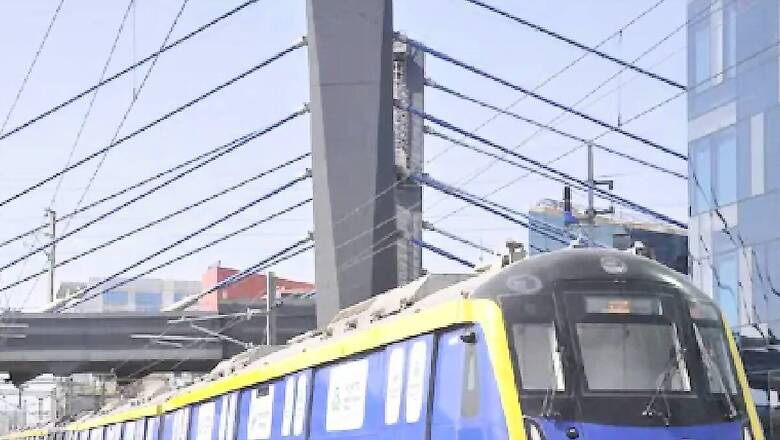
views
Mumbai’s eagerly awaited underground Metro Line 3, traversing the Colaba–Bandra-SEEPZ route, is set to be partially complete by the middle of this year.
Ashwini Bhide, the managing director of the Mumbai Metro Rail Corporation (MMRC), shares insights into the project’s progress and its significance for the city’s public transport system in an exclusive interview with The Indian Express.
When asked about the progress of Phase 1 of the MMRC’s operations, Ashwini Bhide mentioned that they have achieved 95 percent completion, including tunnelling from Aarey to BKC and the construction of nine intermediate stations. She highlighted the focus on completing the depot, crucial for Phase 1 operations. Full connectivity between the depot and the main line, especially at the shunting neck area, is still outstanding.
This segment experienced delays because of tree removal and excavation, with permission granted by the Supreme Court only in April last year. She anticipates achieving full connectivity by February 15-20, enabling integrated trials to begin.
Regarding driverless train operations, Bhide mentioned the plan to implement unmanned train operations (UTO) but clarified that the current target is to operate in automatic train operation (ATO) mode. This decision is due to the fact that UTO certification, necessary for fully unmanned operations, has not yet been attained in India. She emphasized the focus on achieving ATO certification, which is feasible provided all necessary requirements and conditions are met.
Bhide highlighted the significance of Metro Line 3 as the sole corridor traversing the island city, interconnecting various modes of transportation. She noted its passage through extremely congested areas and neighbourhoods of Mumbai, providing connectivity to neglected regions and stimulating growth.
On the reduction of cars from roads due to the Metro 3 project, Bhide estimated that initially, around 4.5 lakh vehicle trips per day are expected to decrease with the commencement of operations. The number of vehicle trips is expected to increase to around 6.5 lakh per day as the system reaches its maximum capacity. However, achieving these reductions will likely take 5-10 years, as it requires a significant shift in commuter behaviour.
Bhide mentioned that approximately 7-8 km of roads were initially barricaded during the construction phase, primarily due to the construction of a 5.5 km-long steel deck and necessary diversions. Reinstatement progress has already begun in some areas, with efforts to gradually restore roads as the corridors are commissioned.
While the trains are designed to reach a speed of 95 km per hour, the effective operating speed will be approximately 35 km per hour. This difference is due to the need to stop at every station, which requires time for acceleration and deceleration.
Regarding the Wadala-GPO metro project and the southern extension of the current Metro Line 3 up to Navynagar, Bhide mentioned that both projects are undergoing updates to their detailed project reports (DPR).
For the Wadala-GPO metro project, the central government has given certain suggestions to make the project viable, and they are in the process of updating the DPR. Similarly, for the southern extension of the current Metro Line 3 up to Navynagar, discussions with stakeholders are ongoing to establish its viability.
Ticket fares for Metro Line 3 will be determined by the Metro Rail Authority, ensuring alignment with current fare structures in Mumbai, with subsequent fare revisions following the guidelines outlined in the Metro Act, including the adoption of a fare fixation review committee.
















Comments
0 comment